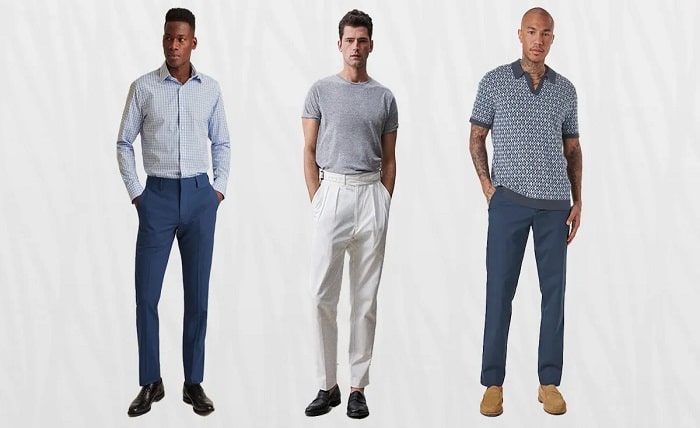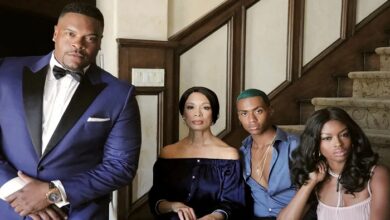The Ultimate Guide to Business Casual: Dress Code, Tips, and More

In today’s professional world, business casual has become a widely accepted dress code, especially in corporate and creative workplaces. It strikes the perfect balance between looking polished and maintaining comfort. Whether you are attending a job interview, heading to work, or participating in a business meeting, understanding the nuances of business casual attire is crucial. But what exactly does “business casual” mean?
Business casual is often a confusing term since it can vary depending on the company, industry, and culture. This guide will break down the meaning of business casual, when and where to wear it, and how to assemble a wardrobe that fits the bill. We’ll cover the do’s and don’ts, help you interpret dress codes, and provide practical tips for navigating business casual attire with confidence.
he Business Casual Dress Code
The first step in mastering business casual attire is understanding what it entails. Essentially, business casual is a relaxed version of traditional business wear, like a suit and tie, but it’s still polished and professional. In a business casual setting, employees are expected to dress neatly, but there is more room for personal style compared to formal business attire.
The goal of business casual is to look smart and well-put-together without the need for formal suits and ties. Business casual attire generally includes collared shirts, blouses, and polos, along with trousers or skirts. However, the exact interpretation can vary based on the workplace and the occasion. For instance, a more formal company may require slacks and button-up shirts, while a creative office may embrace a more relaxed look with jeans and a smart top.
Understanding business casual means recognizing that it allows flexibility in how you express yourself while still maintaining professionalism.
Business Casual for Men: What to Wear
For men, business casual usually involves a blend of comfortable, well-fitted clothing that still looks sharp and appropriate for the office. Typical business casual attire for men includes dress pants, chinos, or khakis paired with a button-down shirt or polo. Sweaters, sport coats, or blazers may be worn depending on the formality of the office.
It’s also important to focus on footwear. Business casual for men often allows loafers, dress shoes, or even clean, minimal sneakers, depending on the office culture. Jeans may be acceptable in some workplaces, but they should always be dark, well-fitting, and free from any distressing or rips.
Accessories like ties are usually optional in a business casual setting. You might want to add a belt or watch to complete the look, but avoid going overboard with flashy or informal items. Business casual for men is all about striking the right balance—comfortable yet presentable.
Business Casual for Women: What to Wear
Business casual for women is similar in concept to men’s attire, but there are additional options available due to the variety of styles available for women’s clothing. For women, business casual typically includes a mix of dresses, skirts, trousers, and blouses. A knee-length pencil skirt or a pair of tailored pants can easily be paired with a button-up shirt, blouse, or sweater.
While dresses are certainly acceptable, they should not be too short or too revealing. A business casual dress should be professional, perhaps paired with a cardigan or blazer for added sophistication. In terms of shoes, business casual for women often allows flats, low heels, and closed-toe shoes. Depending on the environment, some offices may allow simple sandals, but heels should be kept modest and professional.
Jewelry and accessories should be minimal and tasteful. Opt for simple pieces that enhance your overall appearance without drawing too much attention.
The Dos and Don’ts of Business Casual
When dressing for a business casual environment, there are certain rules and guidelines to keep in mind. Here’s a breakdown of the do’s and don’ts of business casual attire:
Do:
- Keep It Neat and Clean: Even though business casual allows more flexibility, it’s essential to look well-groomed. Make sure your clothes are pressed, shoes are polished, and your hair is neat.
- Opt for Tailored Fits: Clothing that fits well will help you look polished. Avoid overly loose or tight clothing that can appear sloppy.
- Dress According to the Company Culture: Understand the company’s culture and adjust your business casual attire accordingly. Some offices are more relaxed, while others might still expect a more polished look.
- Stick to Neutral Colors: Neutral tones like navy, gray, black, and white are safe bets for business casual. They create a cohesive, professional look.
- Be Mindful of Fabric Choices: Choose fabrics that are appropriate for the climate and season. For example, wool suits are suitable for winter, while cotton and linen might be better for summer.
Don’t:
- Wear Overly Casual Items: Avoid wearing jeans with holes, t-shirts with logos, or athletic wear. Business casual is still a professional dress code, so items like sweatpants and flip-flops should be avoided.
- Go Overboard with Accessories: While accessories can enhance your outfit, too many accessories can make you look overly casual or distracted. Keep it simple and tasteful.
- Wear Clothes That Are Too Revealing: Whether it’s a low-cut blouse or a skirt that’s too short, remember that business casual should still respect the workplace environment.
- Show Up in Sneakers (Unless Allowed): While some offices may embrace sneakers in a business casual setting, it’s best to avoid them unless you’re sure they’re acceptable.
- Forget to Groom Yourself: A messy look can give off an unprofessional vibe. Make sure your hair, nails, and skin are well-maintained.
By following these dos and don’ts, you’ll be able to master the business casual look while maintaining a professional appearance.
Business Casual in Different Industries: How to Adapt
Business casual isn’t a one-size-fits-all dress code. Depending on your industry, the way you interpret business casual can differ. For example, corporate finance and law offices may have a more traditional view of business casual, while tech companies or creative agencies might allow more relaxed attire. Understanding your specific industry’s culture is key to dressing appropriately.
Corporate Industry:
In more formal industries like finance or law, business casual may still require a suit jacket or at least a blazer. Men might opt for dress pants with a collared shirt, while women could wear a professional dress or skirt with a blouse. Conservative colors and fabrics will be more common in these settings.
Creative and Tech Industries:
On the other hand, industries like tech, advertising, and design tend to have a more relaxed approach to business casual. In these settings, you might be able to wear smart jeans, sneakers, and casual button-ups. Creativity is encouraged, so while you should still look polished, there’s more room for self-expression in your outfit.
Healthcare and Education:
In healthcare, business casual may lean towards comfort due to the nature of the work. However, even in casual settings, professional attire is expected. Teachers in education may wear business casual clothing like slacks and blouses, but more casual attire such as cardigans and dresses is common in less formal educational environments.
Common Mistakes to Avoid When Dressing Business Casual
Even with a business casual dress code, there are some mistakes that people commonly make. These slip-ups can affect your professional image and might lead to misunderstandings about how casual you should be in the workplace.
- Overdressing or Underdressing: It’s important to gauge the appropriate level of business casual based on your office environment. Overdressing can make you seem out of touch, while underdressing might give the impression that you’re not serious about your role.
- Wearing Wrinkled Clothes: Even business casual attire should be crisp and well-maintained. Wrinkled clothes can make you look unkempt, regardless of how stylish or casual they are.
- Ignoring the Weather: Dressing appropriately for the season is essential. Avoid heavy wool sweaters in the summer or thin fabrics in winter. Your comfort is as important as your appearance.
- Choosing Too Many Patterns: While some patterns can add interest to your outfit, it’s easy to go overboard. Stick to one pattern at a time, whether it’s stripes, plaid, or polka dots, to avoid clashing.
- Failing to Consider Comfort: Even though you want to look professional, comfort matters. Choose clothing and shoes that you can comfortably wear throughout the workday.
Conclusion
Business casual is all about finding the right balance between comfort and professionalism. It allows for personal style, but it’s essential to dress appropriately for the workplace environment. Whether you’re a man or woman, following a few key principles can help you nail the business casual look every time. With a focus on neatness, tailoring, and understanding your workplace culture, you can confidently wear business casual attire and make the right impression.
Remember, business casual is versatile and adaptable. By staying mindful of your industry, the specific expectations of your workplace, and the occasion at hand, you can create a wardrobe that reflects your personality while keeping you professional.
FAQs
1. What is the difference between business casual and casual?
Business casual is a step up from casual wear, incorporating polished and professional elements such as button-up shirts, blouses, or dress pants, while casual wear includes more relaxed items like t-shirts, shorts, or sneakers.
2. Can I wear jeans to a business casual workplace?
In most business casual workplaces, dark, well-fitting jeans without rips or distressing are acceptable. However, it’s essential to understand your workplace’s policy before choosing jeans as your go-to option.
3. Is a tie necessary for business casual attire?
No, ties are typically optional in business casual settings. You can opt for a collared shirt or polo without the need for a tie, unless the workplace culture suggests otherwise.
4. Can I wear sneakers to a business casual office?
Sneakers may be acceptable in some creative or tech industries but are usually not recommended in more formal business casual environments. Stick to dress shoes or loafers for a safer choice.
5. How should I accessorize for a business casual outfit?
Keep accessories minimal and tasteful. A watch, a simple necklace or bracelet, and a belt are appropriate, but avoid flashy or overly casual accessories like baseball caps or large jewelry pieces.




